Outside the Blockhouse, Germans and Australians faced one another with intent to take life. Inside, they worked shoulder to shoulder to save it.
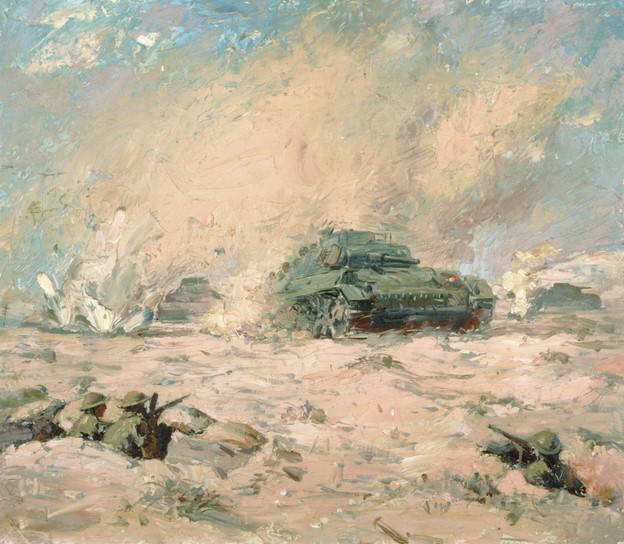
Somewhere along the railway line, west of El Alamein, Egypt, stands an unremarkable, low concrete building. There are many of these old railway workers’ huts, in various stages of ruin, stretched out along the line. However this particular place was the scene of an extraordinary occurrence in 1942, when compassion and humanity prevailed over war’s chaos and carnage.
After spending a few days in the noise and bustle of Alexandria, I hired a car and drove west on the International Coastal Road (which runs from Egypt’s border with Libya to Port Said in the east) to El Alamein. I had booked a few nights in one of the many hotels (the area is now a major beachside holiday destination), as I was keen to explore the area’s World War II history. One particular place I hoped to visit was that unremarkable railway building; known to the German army as ‘The Hut’ and to the Allies ‘The Blockhouse’.
In 1942, El Alamein was the fulcrum upon which the desert war, and arguably all of World War II in Europe, was balanced. A fluid north-south front line, passing through the area, oscillated east and west where the Axis and Allied forces met in a series of fierce battles. General Montgomery, leading the multi-national allied forces, including the Australian Ninth Division, had decreed that there would be no retreat from El Alamein. Field Marshall Rommel, commanding the Germans and Italians, was attempting to crash through the allied lines to Alexandria.
I spent my first evening in El Alamein in my hotel room, trying to find the location of the Blockhouse. My research on the net turned up a few hits; a post by an Italian traveler, who stated ‘the Blockhouse is still there at Tel el Eissa’. A little vague but it was a start, and there were a few photos on the blog that I thought would be useful. Another search result stated the Blockhouse was ‘about 25 kilometres west of El Alamein’, but when I clicked the link it lead to a dead end. I also found a detailed article by an Australian historian, but with no reference to the exact location of the site. A tour operator was offering trips to World War II sites around El Alamein, and there were a few more photos on their site which I thought would help identify the building, if indeed I could actually find it.
The following day, I drove further west out of town in search of the Blockhouse. My plan was pretty loose; try to measure ’25 kilometres west of El Alamein’ and see if I can see the building from the road. The rail line isn’t far south of the International Coastal Road, however construction (which is occurring in the region on a vast scale), concrete road barriers and quarrying obscured the view to occasional glimpses. Having had no luck, I turned around and headed back, scouring the country for anything that fit the description.
The individual situations of both the Axis and Allied forces – a final strike by men and materiel stretched to breaking point, and a last ditch stand with no retreat – made the battles that blazed across El Alamein desperate and deadly. Casualties on both sides were appalling, and medical assistance in the field was paramount.
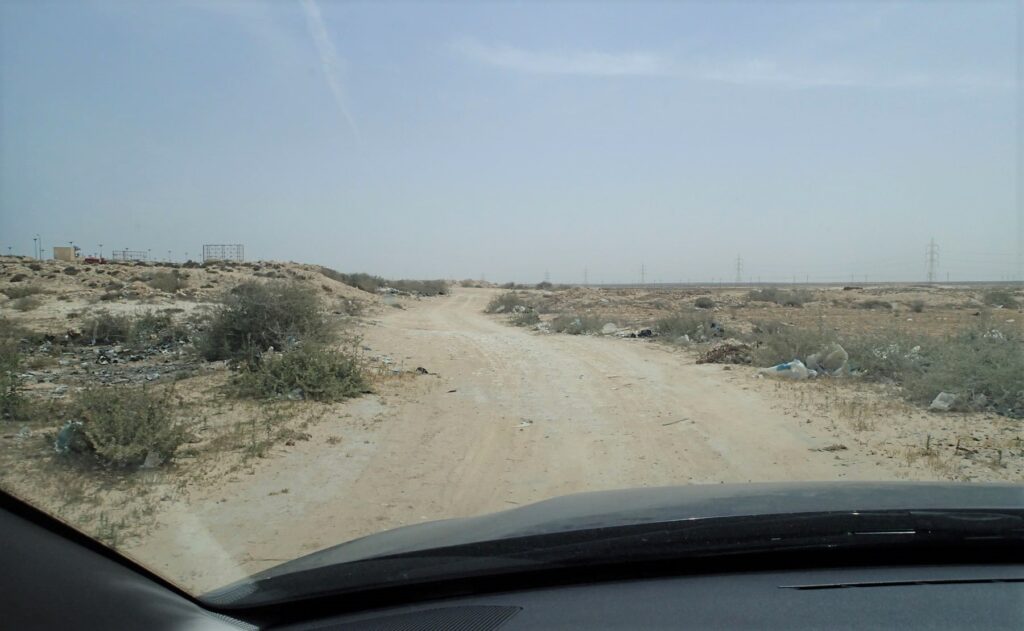
I found a track that headed south around the 25km mark, so decided to follow it. I carefully tip-toed the Peugeot along the ruts and across the potholes, wincing every time I crunched the underneath of the car on the uneven track . Before too long the track disappeared altogether, but in the near distance, on a small rise, was a low concrete building. Could this be the Blockhouse?
I left the car and started walking across the sand and low scrub. I had the reference photographs from my web search on the phone, and when I approached the building and compared them, they didn’t match. The buildings were similar in design, but not the same, and the trees nearby weren’t right either. And where was the railway line? The information stated that line ran close to the Blockhouse. There was a farmhouse nearby and some kids were pointing and me and calling out. It looked like the building had become part of the farm. I headed back to the car.
That night I scoured the web again, and read a little more broadly about the battles of El Alamein. One location mentioned was Tel El Eissa. Not having a decent topographic map, I fell back on web search options. Surprisingly Tel El Eissa appeared. The following day I planned to drive to the location and search for the Blockhouse from there.
The German Army, holding ‘The Hut’ within their lines, had set up a field hospital within its concrete walls. On 30th October, Australian troops overran the position, taking prisoners which included the German medics.
The next day I followed the online map and turned south again off the main coast route, this time onto a narrow sealed road. I could see a small, spread settlement a few kilometres away, which I presumed was Tel el Eissa. I reached the railway line first, and being further west than ‘about 25 kilometres from El Alamein’, I turned east along a dirt track that paralleled the line.
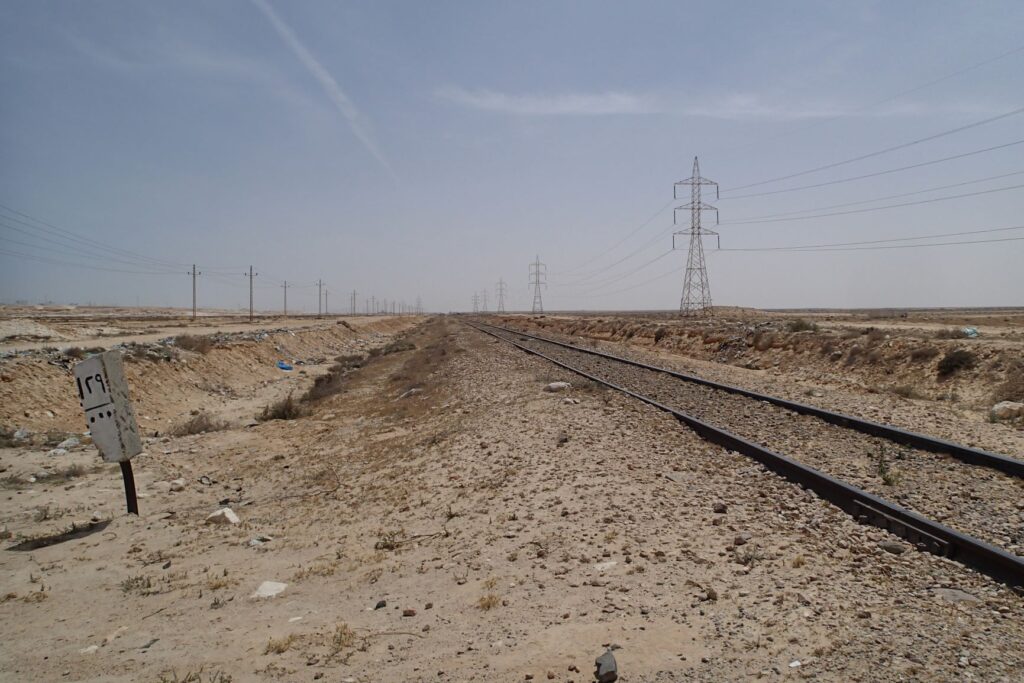
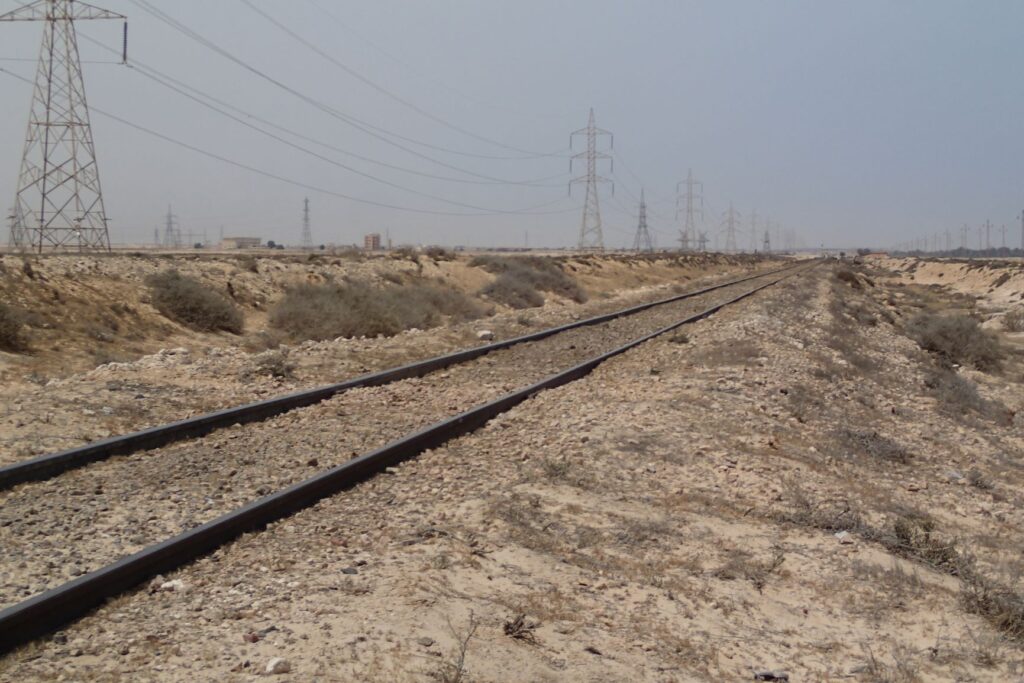
The track was passable for several kilometers, although a few soft sand patches were sketchy, until I reached a road heading south. Grading works had left a large windrow of soft sand beside the road, crossing which was beyond the capabilities of my two wheel drive sedan. I climbed the windrow and scoured the country to the east. I could see the building I had checkout the previous day, and to the south of it another building closer to the railway line. Maybe that was the Blockhouse? Beside the road I found a concrete marker with a skull and crossbones and some Arabic writing. I thought it might be a warning of unexploded ordinance, or perhaps that the area beyond was off limits for some other reason. I decided it was best not to wander any further on foot.
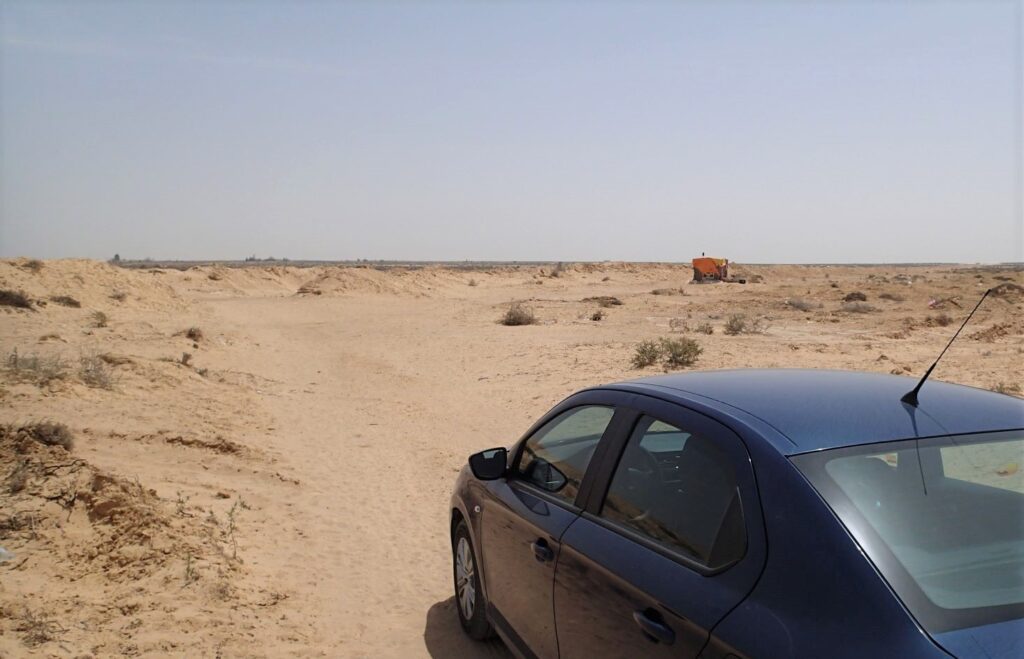
I got back in the car and drove out the way I came. I was starting to wonder if I would find the Blockhouse. I drove back to the Coastal Road, turned east towards El Alamein, then took the rough track back to the first building I had investigated. Parking up, I walked a respectful distance around the farm and, although a little nervous about leftover mines, headed south across the dusty plain. Picking up the rail line, I walked the short distance west to the building I had seen from my windrow lookout.
As I approached the deserted building I saw it didn’t match any of the photos I had; it was definitely not the Blockhouse. I started to wonder if the railway had been realigned since the war, and that I was searching in completely the wrong place. The lines, sleepers and supporting infrastructure certainly looked relatively new. Since I had been further west than ‘about 25 kilometres out of town’, I figured the Blockhouse must be further east. I started walking along in the dust beside the railway line.
After the capture of the Blockhouse by the Australians: ‘Three German medical officers and their orderlies remained on duty…the German doctors and orderlies toiled that night and in the following days to minister without discrimination to the wounded of both sides as they were brought in’. 1
I was getting tired, and although it was only a mild day, the parched air and breeze was fast drying me out. I could make out more buildings in the distance, and trudged on through the sand until they came into clear view. One appeared to be a modern building, and the other a railway station. I arrived to find Tel el Eissa railway siding, the modern building that was clearly not the Blockhouse, and a pile of bricks and cement. The place was quiet and there wasn’t a soul around.
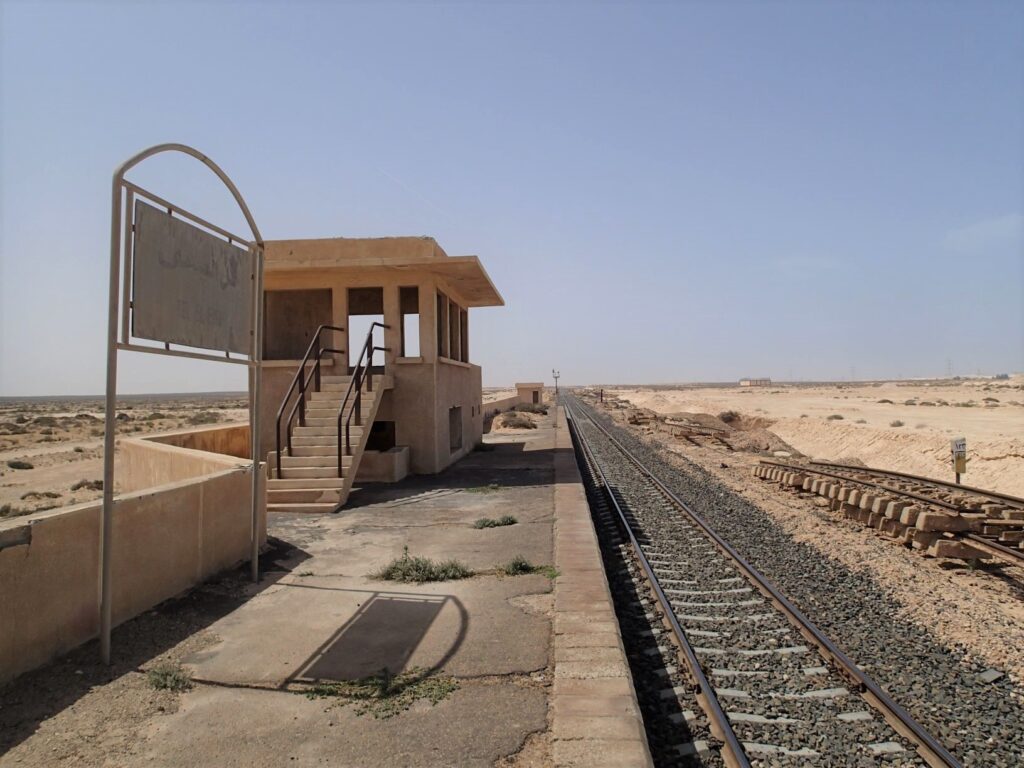
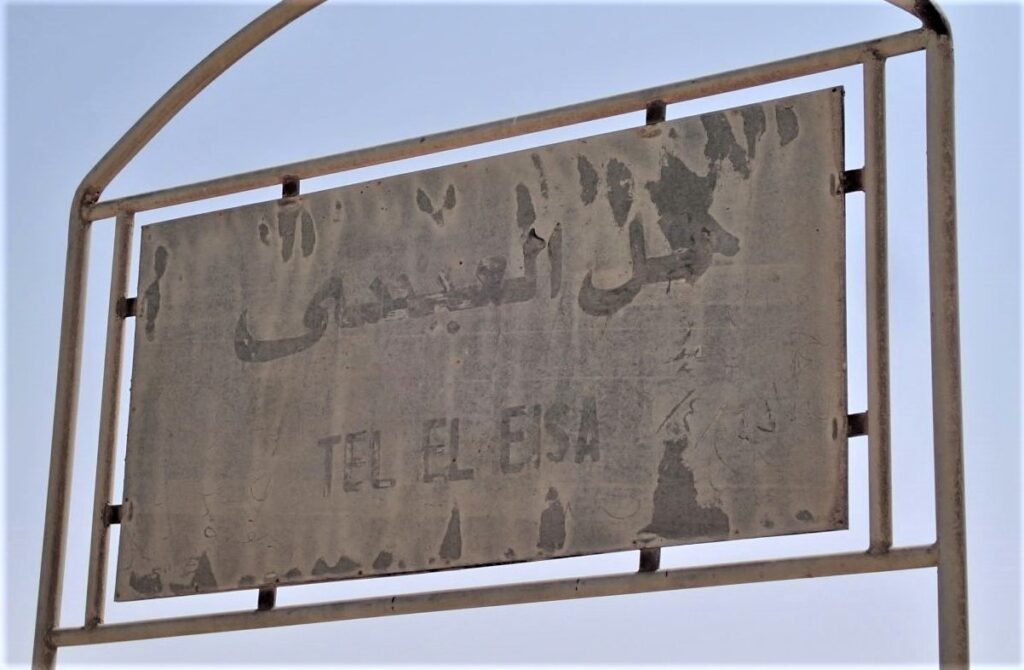
I have to say my heart sank at this point. Perhaps this demolished building was all that was left of the Blockhouse? Maybe it had been knocked down since the articles and photos were published on the web? I looked at my photos on the phone, then stepped out a rough measurement of the pile of rubble.
I was relieved to find it was too small to be the remains of the long, multi-roomed railway workers’ building I was searching for. At least I knew for sure I was in the Tel el Eissa locality. I looked further east towards El Alamein, and could see what looked like the outlying houses and buildings of the town.
I assessed my situation. I was confident that I had checked, either in the car, on foot, or by sight, the length of the rail line from about 30 km out of town back east to El Alamein’s outskirts, and had not found the Blockhouse. A realigned rail line would explain it; the building may be sitting somewhere out in the desert south of where I stood, accessible by a 4WD track known only to the locals. A little crestfallen, I cut cross-country back to the car. I figured livestock would have detonated any ordinance by now.
Perhaps I was destined never to find the Blockhouse.
For more on the battle of El Alamein visit the Australian War Memorial here
1Australian Second World War Official Histories 1966, Volume III – Tobruk and El Alamein
If you enjoyed this post, you may also like Searching for the Blockhouse Part II, El Alamein War Cemetery
Do you have a particular interest in World War I, II and the Cold War? Check out my other blog Ghosts of War. If you enjoy military history, and want to know what it’s like to visit both significant and lesser-known wartime locations today, there’s something there for you.
Leave a Reply